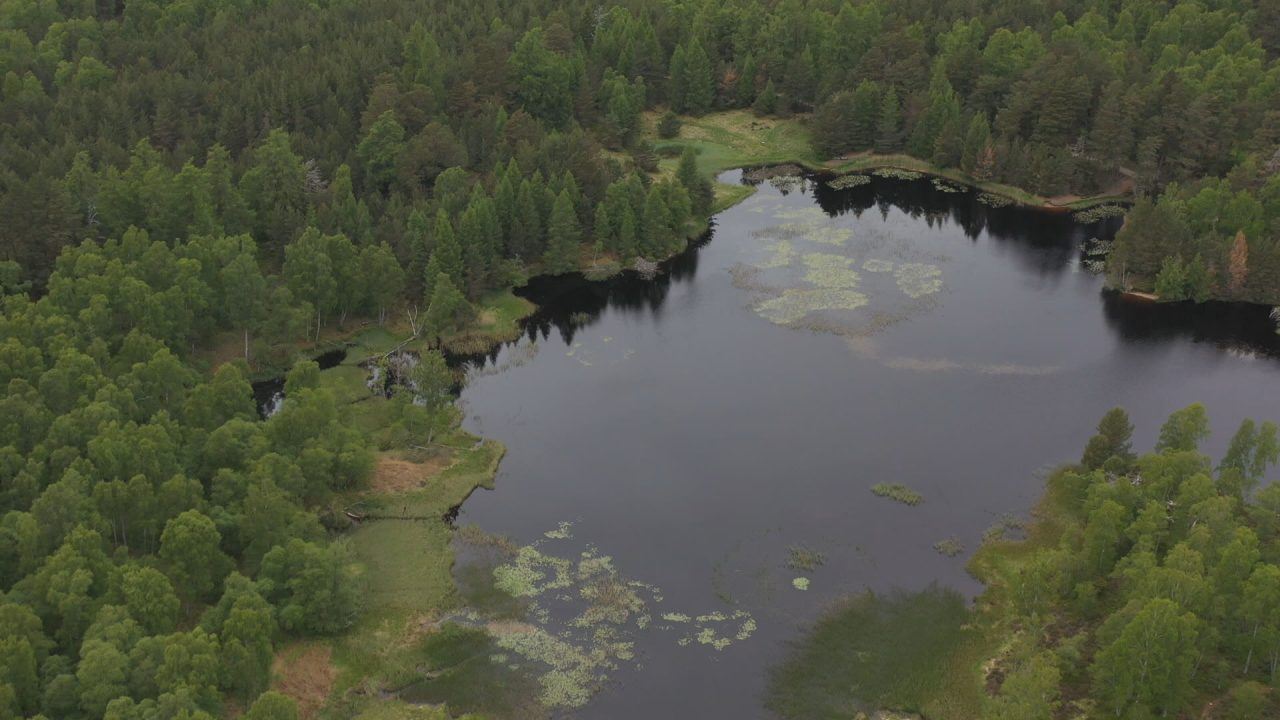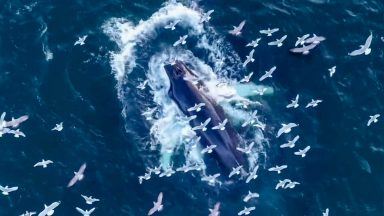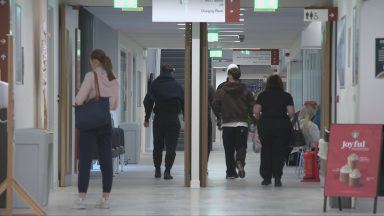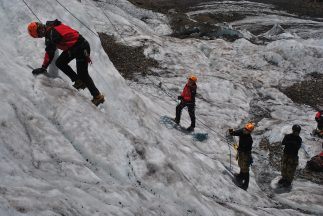Scotland’s push towards net zero is fuelling a boom in nature-based employment, with roles in conservation, restoration and green health growing five times faster than other industries.
In the Cairngorms National Park, efforts to restore the environment are not only tackling climate change and enhancing biodiversity – they’re also revitalising the local job market and changing lives for the better.
From reintroducing beavers to restoring carbon-rich peatlands and prescribing nature for mental health, new initiatives are reshaping landscapes and livelihoods.
Beavers make a comeback
Beavers have returned to the Cairngorms for the first time in over 400 years. A pair were reintroduced to Lily Loch 18 months ago, and they’re not the only newcomers making their mark.
Pete Short, who’s worked as a ranger in the park for five years, recently took on the role of beaver project officer.
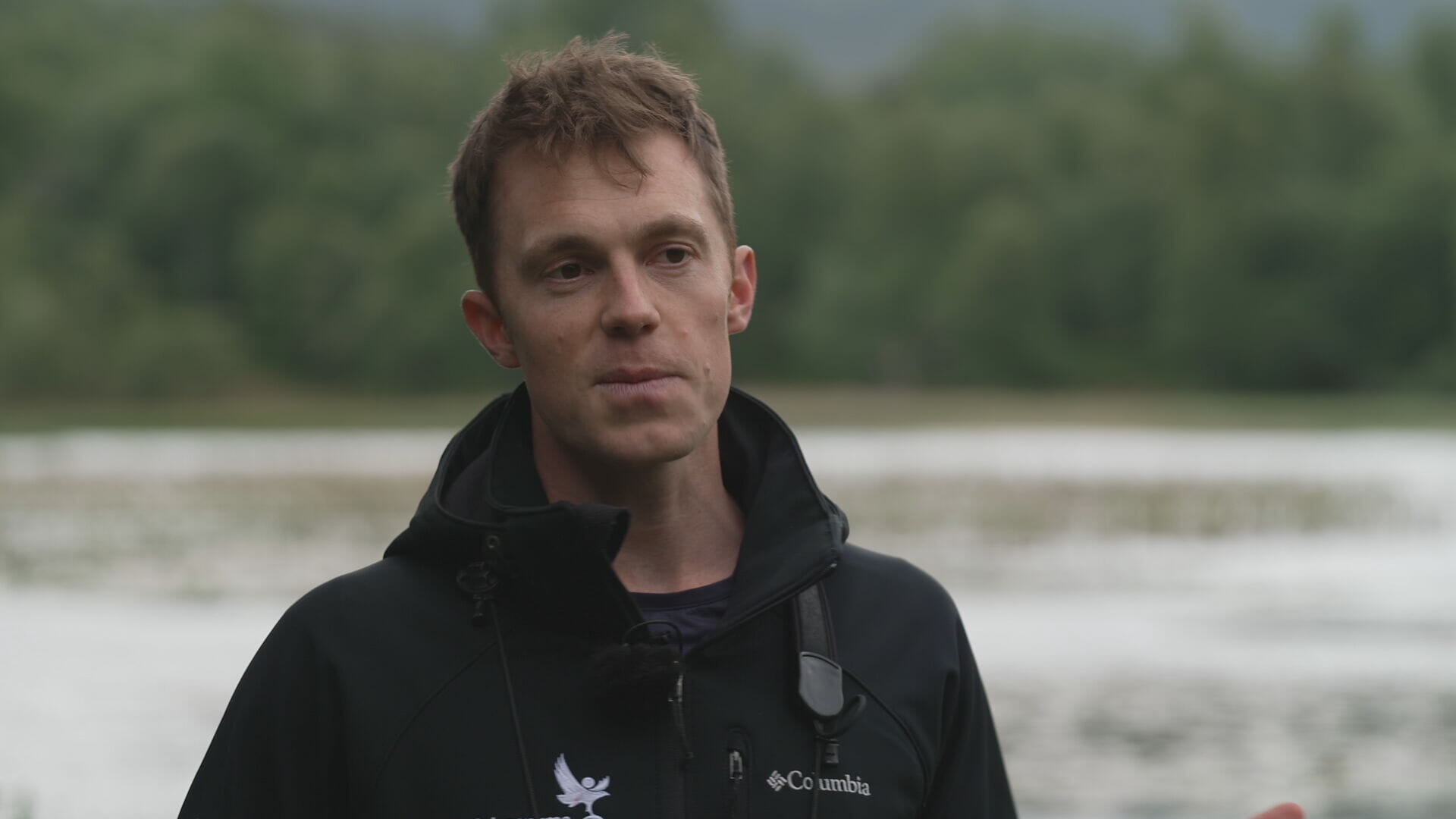 STV News
STV News“It was just such an exciting opportunity for me,” Pete told Scotland Tonight.
“I’ve worked with beavers in a previous role, so there are lots of similarities – dealing with local land managers and communities, but it’s great to have such a flagship keystone species like the beaver to fly the flag for.”
Pete now monitors the animals and tracks their ecological impact. Though beavers are elusive, their influence is easy to spot.
“They make complex wetlands with channels, lodges, dams and burrows,” he explained. “Behind me, you can see a bank lodge, which is a large collection of sticks, some of which they’ve felled.”
Beavers target the outer bark of trees for nutrition. To get it, they fell trees using their teeth, leaving unmistakable signs of their presence.
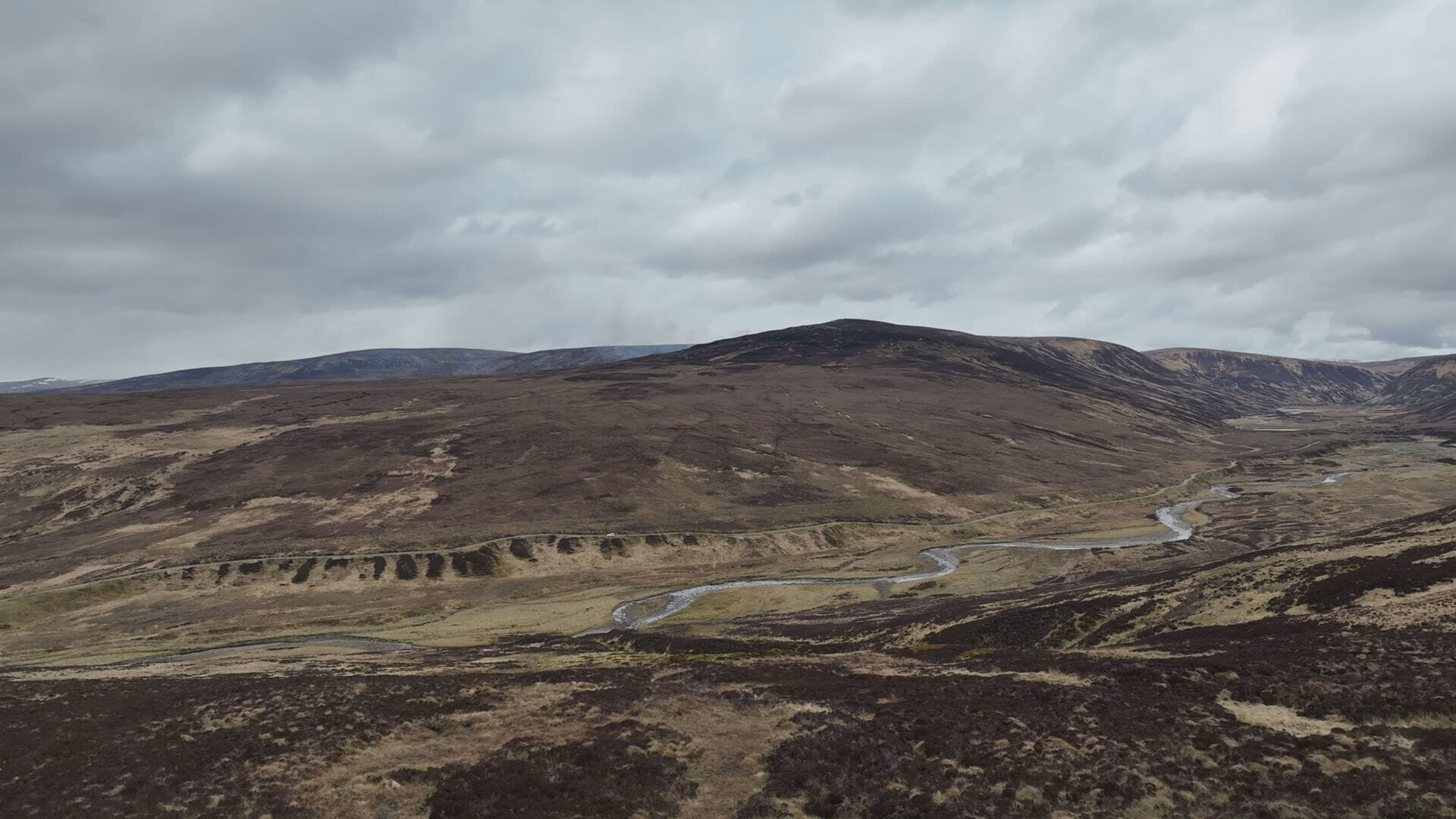 STV News
STV News“The field signs are everywhere,” Pete said. And it’s not just signs. Two wild-born kits have already been spotted in the landscape – a significant measure of success.
“Local people seem to really enjoy it,” he added. “There’s a lot of excitement about the beavers.”
Project manager Jonathan also highlighted the environmental benefits of reintroducing beavers.
“They create dynamism in ecosystems,” he said.
“They produce woody material that becomes new habitat for insects. They also feed on plants like lilies and reeds, recycling nutrients into the ecosystem. That boosts insect numbers, which then supports fish and birds. It’s a chain reaction that enhances biodiversity.”
Listening to concerns
While many have embraced the beavers’ return, not everyone has welcomed the change.
“We have had concerns from local crofters and farmers,” Pete acknowledged. “But what’s really important is maintaining constant dialogue. They’re very much around the table.”
To address any issues, a range of mitigation techniques are available, from wrapping trees in weld mesh to adjusting or removing dams. Pete’s job involves balancing the needs of nature and the people who live alongside it.
Restoring landscapes and upskilling workers
Pete and Jonathan’s jobs are part of 24 new posts created in the Cairngorms. Over the next five years, 20 long-term projects will aim to improve wellbeing, access, landscapes and communities, offering local workers a chance to develop new skills.
Daisy Whytock is leading a peatland restoration project that’s helping lock carbon in the ground.
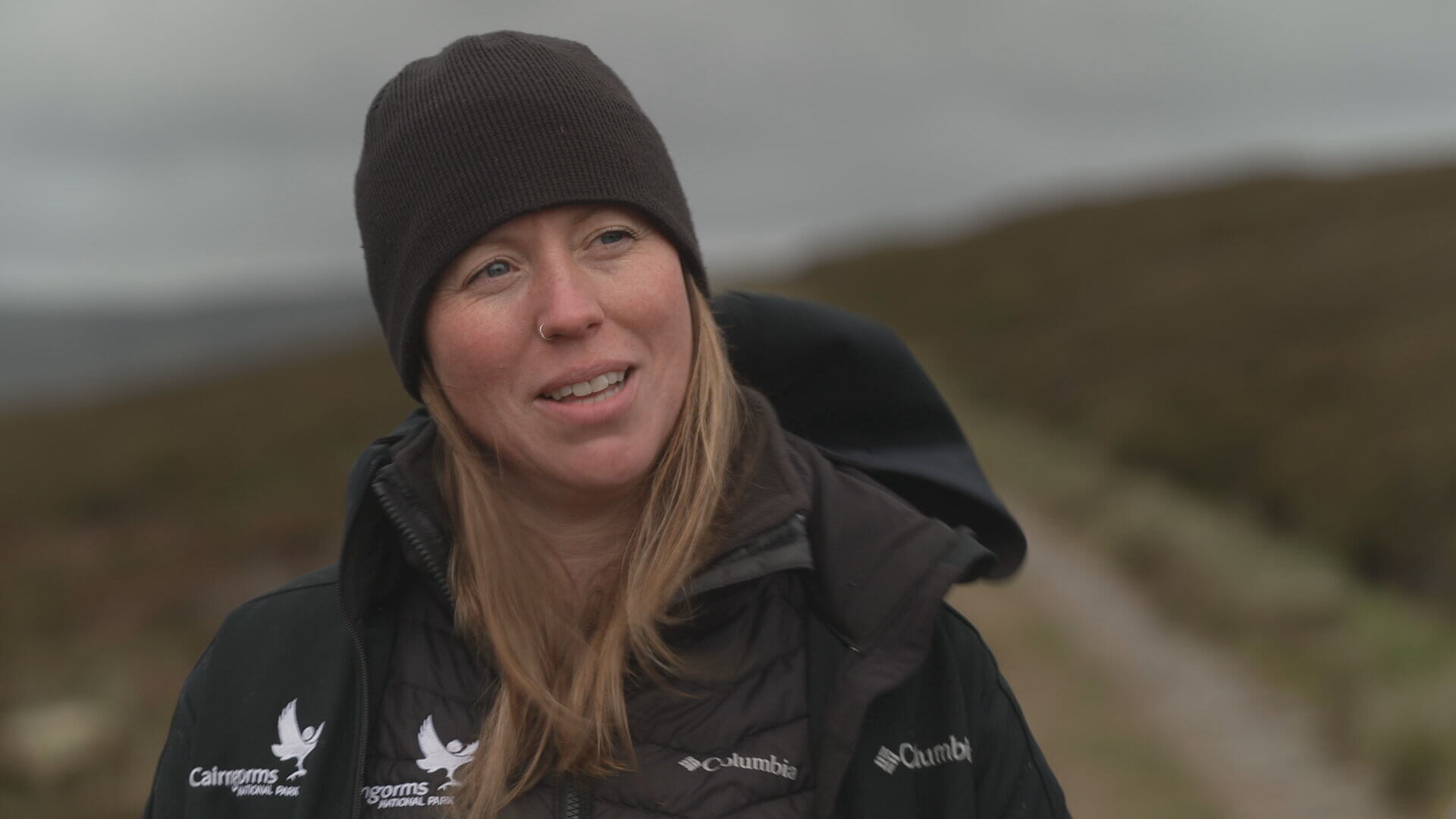 STV News
STV NewsPointing out a patch of exposed peat, she said: “This is what makes peatland so special,” she said. “It’s a thick, black, squidgy soil-like substance formed over thousands of years. It’s full of carbon, and keeping that locked away is crucial to fighting climate change.”
Healthy peat bogs need to stay wet. To achieve that, Daisy’s team is reversing decades of artificial drainage.
Hugh Johnson, from a Perthshire-based civil engineering firm, usually works on traditional infrastructure projects. But last year, his team took on peatland restoration for the first time.
“The location is different,” he said. “You’ve got to think about the remoteness, the machinery, the weather, and getting workers to spend long days out in the moorlands – it’s a real task.”
Still, the experience has been a positive one.
“I think they enjoyed it. They were doing good for the environment and learning new skills. It was good practice,” said Hugh.
Daisy added that hiring local contractors was a key priority.
“Some great companies were applying from the north of England, but that comes with a carbon footprint. So we thought ‘why not train up a local contractor?’ You get the benefit of restoration and also build a local workforce.”
From construction to conservation
Staff were retrained to use familiar equipment to block drains that had been dug back in the 1970s.
“Our job was to dam them up and stop the water flowing away,” Hugh said. “That helps restore the bog’s natural state.”
And the rewards were more than environmental.
“There’s a really positive sense of seeing a before-and-after change,” Daisy said. “You can say, ‘That’s amazing. I did that.’ And there are more opportunities like this every year. The sector is growing, and so are the targets.”
Nature prescriptions and mental health
But the benefits of nature go beyond landscapes and biodiversity. They’re transforming lives, too.
Caron Dawson knows this firsthand. A couple of years ago, she was struggling with her mental health while caring for parents with dementia.
 STV News
STV News“I didn’t go out. I didn’t see anyone,” she said. Eventually, she asked her doctor for help and received something unexpected: a nature prescription.
“There’s no monetary value to it,” she recalled. “I thought, ‘What am I supposed to do with this?’ But they put me in touch with the Newtonmore and Kingussie groups.”
Through the scheme, Caron met Gavin, one of a new team of green health link workers helping people access the outdoors.
“Living in a national park, people assume everyone’s into the outdoors,” Gavin said. “But it’s not always easy. People can be overwhelmed, under-motivated, or just not know where to start.”
The green health programme, launched in GP surgeries across Badenoch and Strathspey two years ago, has already supported dozens of residents. People can also refer themselves.
Caron now attends weekly walking groups and says the impact has been life-changing.
“Within five minutes, I felt like I’d been there a year,” she said. “To get out of the house, have a couple of hours to yourself, go for walks, have tea and cake. It’s freedom, real freedom.”
She added: “Sometimes you don’t even talk. You just look at the scenery. And someone will point something out – it’s beautiful.
“I didn’t expect this when I asked the doctor for help, but it’s made all the difference.”
Watch the full programme on Scotland Tonight at 8.30pm on Thursday, or catch up on the STV Player.
Follow STV News on WhatsApp
Scan the QR code on your mobile device for all the latest news from around the country


